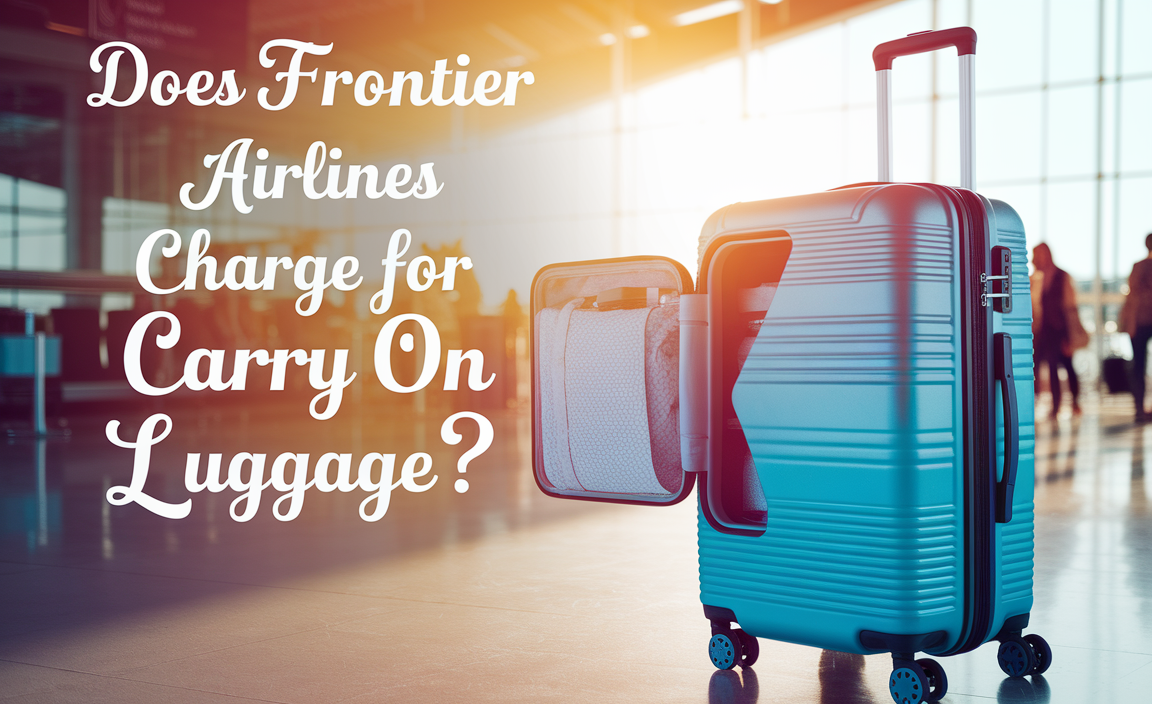Quick Summary: Navigating Barcelona’s public transport is simple with this cheat sheet. Discover easy ways to use the metro, buses, and trams to get around the city affordably and efficiently, ensuring a comfortable and stress-free travel experience.
Barcelona is a vibrant city, and getting around should be part of the adventure, not a chore! But if you’re new to the city, figuring out the best way to hop from the Sagrada Familia to the beach can feel a little overwhelming. Don’t worry, though! Journey Essentials is here to make it easy. We’ve put together a guide that cuts through the confusion, so you can spend less time worrying about tickets and more time enjoying the sunshine and delicious tapas. Let’s dive in and become Barcelona transport pros together!
Your Barcelona Public Transport Cheat Sheet: Get Around Like a Local!
As Michael C. Herrera from Journey Essentials, I know that the best travels are the ones where you feel confident and comfortable. Getting around a new city is a big part of that, especially when you’re managing luggage, kids, or even just looking for a discreet and reliable way to handle personal needs like adult and child diapers during long days of exploring. Barcelona’s public transport system is fantastic once you know the basics. It’s efficient, affordable, and covers almost every corner of the city. Ready to unlock the secrets of seamless Barcelona travel?
Why Barcelona’s Public Transport is Your Best Friend
Barcelona boasts a well-integrated public transport network managed primarily by Transports Metropolitans de Barcelona (TMB). This system includes a sprawling metro, extensive bus routes, and a charming tram system. It’s designed to be accessible and user-friendly for everyone, from solo explorers to families needing to manage car seats and changing supplies.
Using public transport means you can:
- Save Money: It’s significantly cheaper than taxis or ride-sharing services.
- Reduce Stress: Forget about parking hassles and navigating unfamiliar roads.
- Be Eco-Friendly: Contribute to a greener city by choosing sustainable travel.
- Experience the City: See more of Barcelona’s diverse neighborhoods as you travel.
- Stay Comfortable: No need to worry about long walks in uncomfortable shoes or managing personal needs on the go – you can easily get back to your accommodation or find facilities when needed.
Understanding Barcelona’s Transport Zones
Before you even buy a ticket, it’s helpful to know about the fare zones. Barcelona and its surrounding areas are divided into zones, with Zone 1 being the most central and covering most tourist attractions. For most visitors staying within the city, a Zone 1 ticket will be all you need. This simplicity is great for keeping travel costs down and making your journey predictable.
The fare system is managed by the Autoritat del Transport Metropolità (ATM). Most tickets and travel cards cover Zone 1. If your plans extend further out, you’ll simply need a ticket that covers the additional zones. For typical city exploration, focusing on Zone 1 is your best bet.
Familiarize Yourself with the Metro: Barcelona’s Underground Lifeline
The Barcelona Metro is the backbone of the city’s transport. It’s clean, efficient, and runs frequently, making it the quickest way to cover longer distances within the city center.
Key Metro Lines to Know
There are currently 12 Metro lines (L1 to L12), each identified by a number and a color. For tourists, the most useful lines are:
- L1 (Red): Connects Plaça de Catalunya, Universitat, and Fira (for events).
- L2 (Purple): Runs through the Gothic Quarter and to Badalona.
- L3 (Green): A major artery touching Plaça de Catalunya, Passeig de Gràcia, Espanya, and Les Corts.
- L4 (Yellow): Useful for Barceloneta beach and areas around Passeig de Gràcia and Urquinaona.
- L5 (Blue): Connects Sagrada Familia with Diagonal and Cornellà.
Major interchange stations where you can switch between lines include:
- Plaça de Catalunya: Connects L1 and L3.
- Universitat: Connects L1 and L2.
- Passeig de Gràcia: Connects L2, L3, and L4.
- Sants Estació: Connects L3 and L5, and also serves as the main train station.
- Sagrada Familia: Connects L2 and L5.
Using the Metro: Step-by-Step
- Find the Station: Look for the red “M” signs indicating a Metro station entrance.
- Buy Your Ticket: You can purchase tickets from machines inside the station. These machines usually have language options.
- Validate Your Ticket: Insert your ticket into the turnstile slot to open the gate. Keep your ticket as it may be checked on board or at the exit.
- Follow the Signs: Signs clearly indicate the direction of travel (the name of the final station on the line in that direction) and the line number and color.
- Board Safely: Wait for passengers to disembark before boarding.
- Alight at Your Stop: Metro stations are announced. Press the door-opening button if necessary.
For a truly seamless experience, especially if you or your children need extra support or have specific comfort requirements, knowing the layout and having your travel essentials (like travel-sized changing kits or discreet adult diaper supplies) easily accessible in your bag means you can focus on the journey. The Metro is generally very safe and well-lit, making it a comfortable option even late at night.
Barcelona Buses: Connecting You to Every Nook and Cranny
Buses are a great way to see the city from street level. The TMB bus network is extensive and complements the Metro, reaching areas the subway doesn’t. You’ll find various types of buses:
- Regular Buses (Red Numbers): These are the most common and connect most of the city.
- H Buses (H1, H2, etc.): These are “Corredor” buses that run along major, direct routes.
- V Buses (V1, V11, etc.): These are “Via Laietana” buses, often serving central areas.
- D Buses (D20, D40, etc.): These are “Diagonal” buses that cross the city along major avenues.
- N Buses (Night Buses): Known as “NitBus”, these run after the Metro closes, usually from midnight to dawn.
How to Ride the Bus
- Find the Bus Stop: Look for the TMB logo and route numbers displayed at the stop.
- Check Your Route: Ensure the bus number is going in your desired direction. Signs at the stop often show route maps.
- Board the Bus: Enter through the front door.
- Pay Your Fare: If you have a travel card, tap it on the reader. If paying with cash (not always recommended, exact change is sometimes required), state your destination to the driver. It’s easiest to buy a travel card beforehand.
- Signal Your Stop: Press the “stop” button before your desired stop.
- Exit: Usually through the middle or rear doors.
Buses can be slower than the Metro due to traffic, but they offer wonderful views. For those with strollers or mobility concerns, buses are generally quite accessible, with designated spaces and ramps.
The Barcelona Tram: A Scenic and Convenient Option
The Trambaix and Trambesòs networks add another layer to Barcelona’s public transport. Trambaix connects the southwestern outskirts of Barcelona, while Trambesòs runs along the coast, linking the northern and southern parts of the city. For most city visitors, the Trambesòs lines will be more relevant.
Trambesòs Lines
- T4: Connects Port Olímpic, Glòries, and Ciutadutella Park.
- T5: Connects Glòries and neighborhoods further north.
- T6: Connects Glòries and the southern coastal areas towards Besòs.
Using the Tram
The process is very similar to the Metro and buses:
- Find the Stop: Tram stops are clearly marked.
- Buy Your Ticket: Use the machines at the stop or onboard machines (check specific line instructions).
- Validate Your Ticket: Tap your card or insert your ticket into the validator before or upon boarding.
- Check the Direction: Ensure the tram is heading in your direction.
- Alight at Your Stop: Press the button to request your stop.
Trams are often a less crowded and more relaxed way to travel, offering a smoother ride and great views of the city’s modern architecture and coastal areas.
Choosing the Right Ticket: Essential for Smart Travel
This is where you can really save money and simplify your travel. Avoid buying single tickets for every journey if you plan to travel more than a few times. T-casual and Hola Barcelona Travel Cards are your best friends.
Ticket Options Explained
| Ticket Type | Description | Best For | Price (Approx. Zone 1) |
|---|---|---|---|
| T-casual | 10 journeys on Metro (excluding station Funicular de Tibidabo, Aero Metro), Bus (TMB), Tram (TRAM), FGC (Zone 1), and Rodalies de Catalunya (Zone 1). Valid for one person. | Solo travelers or individuals making multiple trips over a few days. | €11.35 |
| T-familiar | 8 journeys over 30 days for multiple people. Can be shared. Valid for Metro (excluding station Funicular de Tibidabo, Aero Metro), Bus (TMB), Tram (TRAM), FGC (Zone 1), and Rodalies de Catalunya (Zone 1). | Couples, families, or friends traveling together who may not use transport equally or frequently. | €10.00 |
| Hola Barcelona Travel Card | Unlimited travel for a set period (48, 72, 96, or 120 hours) on Metro, Bus (TMB), Tram (TRAM), FGC (Zone 1), Rodalies de Catalunya (Zone 1), and Metro de Barcelona (excluding L9 Sud airport line). | Tourists planning to use public transport heavily for sightseeing and moving around the city quickly. | 48h: €16.60 72h: €23.75 96h: €30.90 120h: €38.00 |
| Single Ticket | One journey on Metro (excluding station Funicular de Tibidabo, Aero Metro), Bus (TMB), or Tram. | Very infrequent use, or as a supplement to a travel card. | €2.40 |
Note: Prices are subject to change. Always check the official TMB website or ticket machines for the most current pricing.
Where to Buy Tickets
- Metro Stations: Ticket machines are available in all Metro stations.
- TMB Information Points: Found in some major stations.
- Online: Hola Barcelona Travel Cards can be purchased online in advance.
- Tabac Shops (Sometimes): May sell certain types of travel cards.
For parents traveling with young children, remember that children under 4 travel free. For older children, the T-casual or Hola Barcelona card can be very convenient. If you’re managing a lot of gear, or need to ensure privacy and comfort for personal care needs (like discreetly managing adult diapers for longer trips, or easy access to child diaper bags), having fare-loaded cards means less fumbling with change.
Navigating with Specific Needs: Comfort and Convenience
At Journey Essentials, we understand that travel comfort extends to peace of mind about personal needs. Barcelona’s public transport system is generally accommodating, but planning is key.
Tips for Families with Children
- Stroller Accessibility: Most Metro and Tram stations are equipped with elevators or ramps, though some older stations might have limitations. Buses are usually the most accessible option for strollers.
- Diaper Changes: Public restrooms are available in major Metro stations and shopping centers. Carrying a portable changing mat and travel-sized wipes is always a good idea for on-the-go changes. Consider discreet, reliable child diapers that offer excellent absorbency and comfort for long sightseeing days.
- Food and Drink: Generally allowed on the Metro and buses, but be mindful and tidy.
Tips for Adults with Mobility or Personal Care Needs
- Accessibility: Prioritize routes and stations labeled as accessible. The TMB Accessibility page provides detailed information on accessible stations and services.
- Discreet Comfort: For those who use adult diapers, Barcelona’s public transport is no different from any other urban environment. The key is preparation. Packing high-absorbency, comfortable adult diapers designed for active use means you don’t have to worry about leaks or discomfort during your explorations. Choosing breathable materials can enhance comfort on warmer days.
- Planning Stops: Familiarize yourself with Metro station layouts. Major stations often have more facilities. If you anticipate needing to use restrooms or freshen up, plan your journeys accordingly, perhaps linking longer rides with breaks in areas where facilities are known to be available.
- Travel Cards: Having a pre-loaded Hola Barcelona card or T-casual means you can swiftly move through turnstiles without the hassle of payment, which can be appreciated when managing mobility aids or personal items.
Connecting to the Airport
Barcelona-El Prat Airport (BCN) is well-connected to the city:
- Aerobús: A dedicated express bus service that runs frequently between Plaça de Catalunya and the airport terminals (T1 and T2). It’s faster and more direct than regular buses.
- Metro: Line L9 Sud (Orange) connects the airport to the city’s Metro network. However, this line is not included in the Hola Barcelona card or the T-casual/T-familiar tickets for the airport stretch. You’ll need a special airport ticket (Billet Aeroport).
- Train: RENFE trains connect the airport (T2) to Sants Estació and Passeig de Gràcia. This is covered by Rodalies tickets if you are within Zone 1.
- Taxi/Ride-Sharing: Available but more expensive options.
For ease, the Aerobús is often the most straightforward for many travelers arriving with luggage.
Pro Tips for a Smooth Journey
Here are some extra tips to make your Barcelona transit experience even better:
- Download the Apps: The TMB App and Google Maps are invaluable for real-time route planning and schedules.
- Be Aware of Pickpockets: Especially in crowded areas and on busy lines (like L3 and L4), keep your belongings secure. Use front-facing bags and be mindful of your surroundings.
- Learn Basic Phrases: “Hola” (Hello), “Gràcies” (Thank you), “Perdona” (Excuse me), “A quina parada?” (At which stop?) can be helpful.
- Station Etiquette: Stand to the right and walk to the left on escalators. Let passengers exit the train before boarding.
- Night Travel: The NitBus network is excellent for late-night travel when the Metro is closed, though service may be less frequent than daytime.
- Hold Onto Your Ticket: You might need it to exit some Metro stations, and it’s essential if inspectors come aboard.
Frequently Asked Questions (FAQ)
Q1: What is the cheapest way to use public transport in Barcelona?
The T-casual card (10 single-person journeys) is generally the most economical option if you plan to make more than a few trips. If you’re staying for several days and intend to travel extensively, the Hola Barcelona Travel Card might offer better value for unlimited travel.






